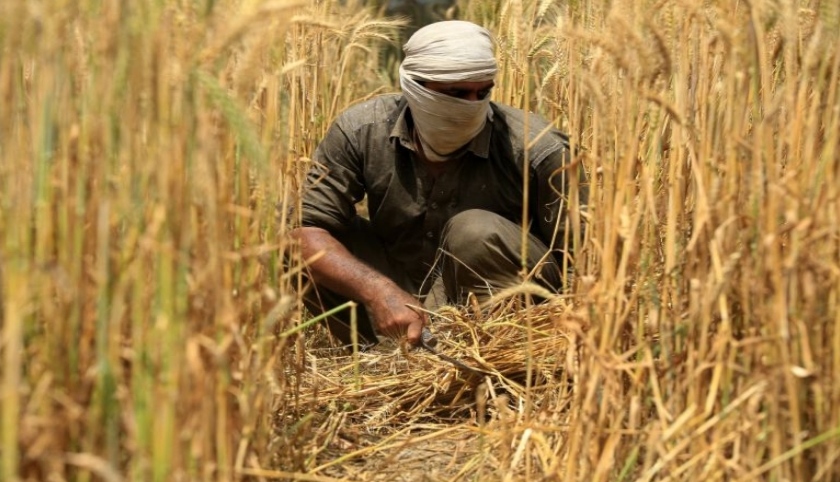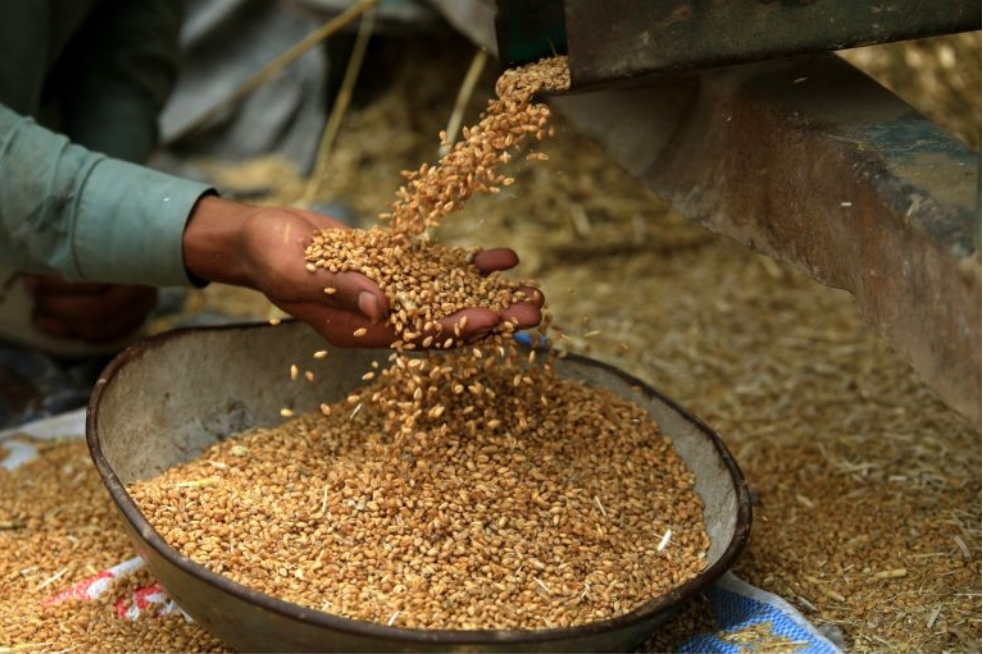Why are Pakistan’s wheat farmers protesting against the government?
By Abid Hussain
Farmers say recent wheat import policies have caused their financial woes.

Pakistan is producing 28 million metric tonnes of wheat annually as of 2023 .Tens of thousands of farmers in Pakistan are holding protests in several cities over the government’s decision not to buy their wheat, causing them huge losses in income.
The farmers in Punjab, the country’s largest province and often called the “bread basket” of Pakistan, are demanding that the government stop wheat imports that have flooded the market at a time when they expect bumper crops.
At a protest in Lahore, the provincial capital, on Monday, police violently pushed back the farmers with batons and arrested dozens of them.
What triggered the protests?
The farmers are furious about the import of wheat in the second half of last year and the first three months of this year, resulting in an excess of wheat in the market and reducing prices.
Agriculture is one of the most significant income sectors in Pakistan, making up nearly 23 percent of the gross domestic product (GDP) of the country. Wheat makes up 2 percent of the whole.
Following devastating floods in Pakistan in 2022, the impact on wheat farming caused a shortage of wheat in early 2023. While Pakistan consumes around 30 million tonnes of wheat per year, only 26.2 million tonnes were produced in 2022, pushing up prices and resulting in long queues of people in cities trying to buy wheat. There were even instances of people being crushed in crowds trying to access wheat.

The farmers accuse recent wheat import policies of causing their financial woes
The Pakistan Democratic Movement (PDM), the ruling coalition at the time, decided to allow the private sector to import wheat in July 2023, just a month before the end of its tenure in government.
According to figures from the Ministry of National Food Security and Research, between September 2023 and March 2024, more than 3.5 million tonnes of wheat were imported into Pakistan from the international market, where prices were much lower.
As a result of the excess, at the beginning of April this year, when Pakistan’s farmers started harvesting their wheat, the country’s national and provincial food storage department was holding more than 4.3 million tonnes of wheat in its stocks.
Usually, the government purchases around 20 percent of all the wheat produced by local farmers at a fixed price (about 5.6 million tonnes, based on a 2023 yield of 28 million tonnes). This intervention in the market, it says, ensures price stability, prevents hoarding and maintains the supply chain. This year, however, it has announced that it will purchase only 2 million tonnes of wheat from Pakistani farmers.
If farmers produce as much wheat this year as they did last year – and in fact, they expect to produce more – that represents around only 7 percent of total produce, leaving farmers out of pocket, they say.
Khalid Mehmood Khokhar, president of the farmers’ organisation Pakistan Kissan Ittehad (PKI) and a farmer from the city of Multan in Punjab, said that also allowing private importers to bring unlimited wheat into the country last year means that farmers will now have to sell what they can to other sources at much-reduced prices – and they will suffer great losses.
“With a bumper crop, we are expected to grow nearly 32 million metric tonnes of wheat this year, but with the government’s coffers already full of wheat, we will be able to sell not more than 50 percent of our crop. This could result in losses of nearly 380 billion rupees ($1.4bn),” Khokhar told Al Jazeera.
Why does it matter how much wheat the government buys?
According to Adil Mansoor, a Karachi-based food security analyst and researcher, the government’s purchase of domestic wheat each year helps to set the price at which the rest of the farmers’ wheat is sold to flour millers and others in the market.
“When everybody knows that the single largest buyer [the government] will purchase the wheat at a certain price, it means that the rest of the market functions accordingly as the government has set a reference price, and sells goods on that price,” he explained.
What do the farmers say?
Ishfaq Jatt, a wheat and cotton farmer who owns 4.8 hectares (12 acres) of land in Khanewal, Punjab, said the production cost for wheat has risen sharply due to the high price of fertiliser, water and other requirements for growing wheat.
“Now we farmers also have to sell the wheat to middlemen at a much-reduced rate, incurring losses for us,” Jatt told Al Jazeera. “I have a small farm. I do not have any space to store the wheat I have grown. What will I do with it? And if I don’t earn from my harvest, how can I sow my next crops?”
He added that many farmers may opt to avoid planting wheat in future years if they feel they “cannot trust the government anymore”.
What does the government say?
Prime Minister Shehbaz Sharif has ordered an investigation into the wheat crisis.
Bilal Yasin, provincial food minister for Punjab, told the provincial assembly earlier this week that the crisis had been caused by decisions made by the caretaker government that took over in August last year after the tenure of the previous elected government came to an end. Elections, which should have been held within three months, were delayed by the need to redraw constituencies following the latest census. They were eventually held in February this year.
“Those people who allowed the import of the wheat close to wheat harvest season are responsible for this crisis. However, despite this, the government will fully support the small farmers,” the minister said.
Al Jazeera reached out to the food minister for further comment, but did not receive a response.
How will consumers be affected?
Mansoor said the government’s decision not to buy the excess wheat this year “reeks of poor planning and management”, but he pointed out that it will ultimately benefit consumers who have been hard hit by the cost-of-living crisis, as the price of wheat will fall.
“Farmers are naturally going to be very upset, with some incurring massive losses. But if consumers are getting benefit, is it a bad situation?” Mansoor asked.
Pakistan has been hit by skyrocketing prices over the past two years. At its high, inflation stood at nearly 38 percent in May 2023.
However, government action to tackle inflation – along with loans from the International Monetary Fund (IMF) – have brought relative stability, with inflation dropping to 17 percent in April, its lowest in more than two years.
Mansoor also welcomed the government’s effective retreat from interfering in the market.
“The government should have communicated better to farmers about their plan of not purchasing wheat from them. But in the long term, it is a good thing that the government exits from the market,” he said. “This cannot be done overnight, but gradually, it should phase out its involvement in coming years.”




